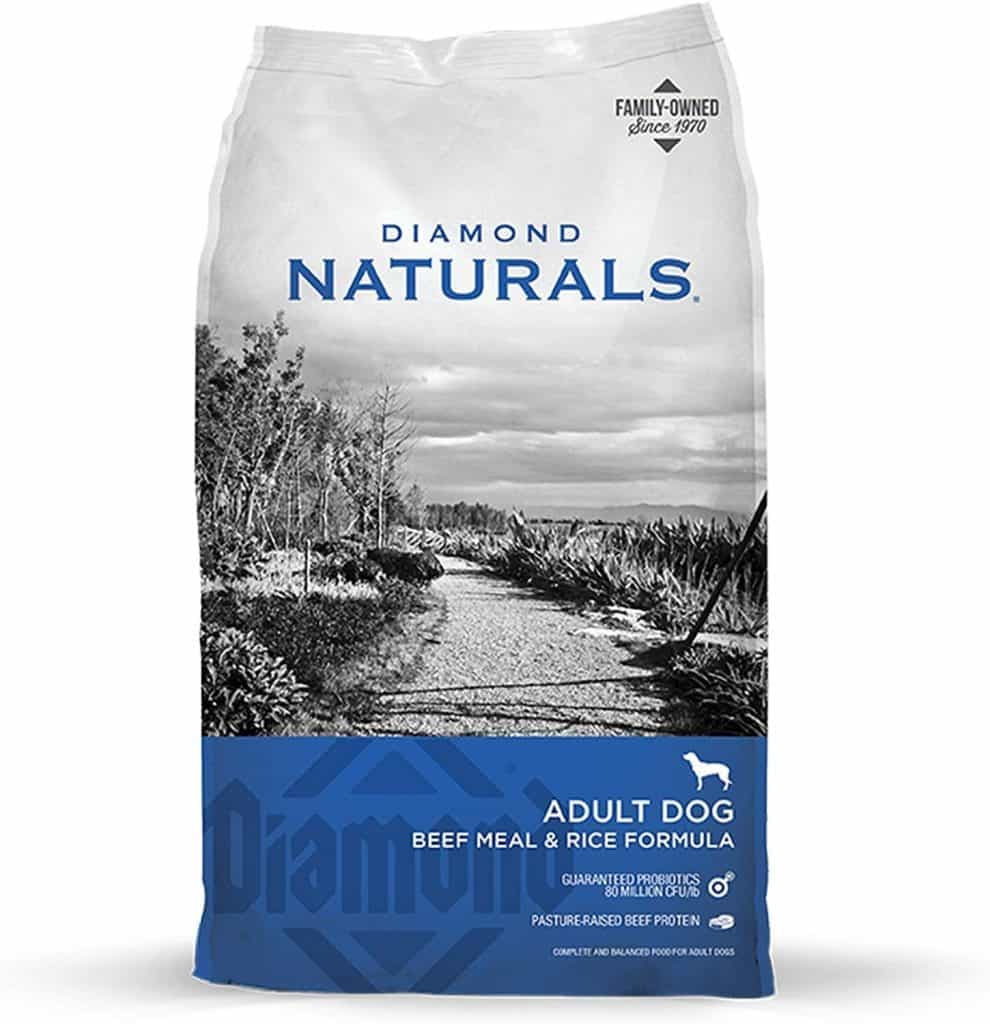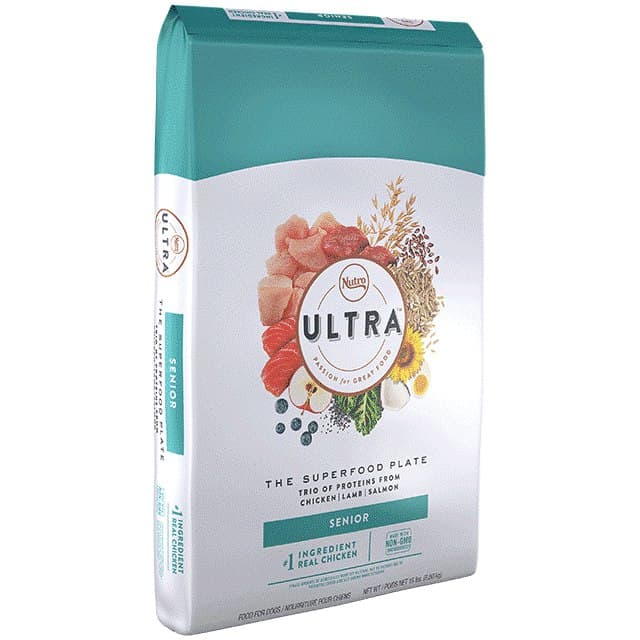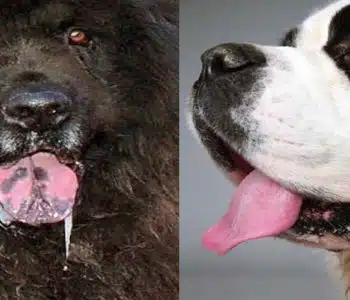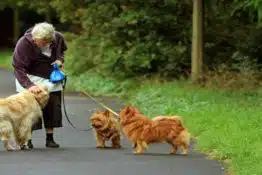
Blue Heeler Dachshund Mix: The Blue Sausage
If you were trying to find a way to make a Doxie even more task-oriented but a bit more obedient, you’ve just found it. The Blue Heeler Dachshund mix is an adorable cross, and these little buggers can do anything but sit and be bored.
If a Doxie Heeler has caught your eye, here’s all you need to know before you decide to adopt them.
History of the Blue Heeler Dachshund mix
Designer breeding became a thing about 30 years ago, so there isn’t enough info on any of the designer breeds. Because of that, we need to look into the parent breeds if we want to understand this cute cross-breed.
Dachshunds were bred in the 16th-century Germany for one purpose—to hunt badgers. This job required them to develop their unique shape. The short legs and elongated bodies enabled them to crawl into the dens of the burrowing animals and drag them out to their human partners. Those Dachshund memes suddenly seem slightly less funny, don’t they?
They are brave and incredibly, frustratingly stubborn. Their fierce loyalty and affectionate nature make them one of the all-time favorites among the dog kind, so it’s no wonder they have badgered their way onto our list of best dog breeds to adopt. Here’s one fun fact about this lovely breed—even Picasso was their great fan! If you want to know more, check out these 10 facts you should know about Dachshunds with pictures as well as Dachshund facts.
Australian Cattle Dogs, more commonly known as Blue or Red Heelers, were bred in Australia in the 19th century, specifically to drove cattle over long distances and unwelcoming terrain. Interestingly enough, the development of this breed is credited to one man, whose name was Thomas Hall. He crossed his droving dogs with dingoes and produced the ancestors of Blue Heelers. Because the dogs provided him with a significant advantage over other farmers who routinely lost their cattle because their dogs weren’t up for the task, he refused to give the pups to anybody else. Only after his death did Blue Heelers become available to others.
Their nicknames—Blue or Red Heelers—come from their unique color. Only blue and red are acceptable colors when it comes to the breed standard. These fellows are sturdy, herding dogs with plenty of stamina. They need a lot of activity and something to do, or they won’t be happy.
Best Dog Food for Blue Heeler Dachshund

- Essential, high-quality protein for healthy muscle development, and carbs for energy for an active life.
- Calcium, phosphorus and essential vitamins for strong bones and teeth.
- Glucosamine is added for joint health and mobility support.
- Vitamins, chelated minerals and antioxidants contribute to your pup's immune system health.
- No corn, wheat, soy or chicken (or poultry) by-product meals.

- Made in the USA by a family-owned company using quality ingredients from trusted domestic and global sources.
- With real pasture-raised beef protein as the #1 ingredient, this recipe helps support bones, joints and lean, strong muscles.
- Beef protein provides energy and muscle building blocks, omega fatty acids promote skin and coat health and superfood fruits like blueberries and oranges offer vitamins and minerals.
- Each serving includes species-specific K9 strain proprietary probiotics, plus antioxidants and prebiotics to help support healthy digestion, immune system health and overall wellness.
- Made without corn, wheat, artificial flavors or colors.

- Protein-rich formula features chicken, lamb, and salmon—and chicken is the first ingredient!
- Contains a blend of 15 superfoods including coconut, chia, kale, and blueberries that promote coat and skin health.
- Recipe specially formulated for senior dogs using only high-quality, real ingredients to provide complete and balanced nutrition.
- Ingredients are sourced from trusted farmers and rigorously tested for quality and food safety.
- No artificial preservatives, flavors, or colors, and chicken by-product meal, corn, wheat, and soy protein free.
Three Reasons Not to Adopt a Doxie Heeler
Despite their many qualities, these dogs are not for everyone. Here are three reasons not to adopt a Doxie Heeler.
- They don’t get along with other pets.
- They tend to be loud.
- They might be challenging to train.
They Don’t Get Along with Other Pets
The background of the two parent breeds should be enough of a clue. The Dachshund in the mix will try to hunt any animals smaller than themselves. The Heeler will try to herd anything, regardless of the size. Now, if you have cats or rodents, you can already see how things are going to go down. If you want peace in harmony in your home, don’t adopt this cross if you already have other pets.
They Tend to Be Loud
This is not always the case, but if your pup takes after their Doxie parent in terms of barking, you won’t be able to shut them up. It’s not their fault—they’re just naturally chatty! If that’s not something you can deal with, don’t bring a Doxie Heeler into your home.
They Might Be Challenging to Train
Even though Blue Heelers are highly trainable, the Doxie in the mix might prove to be a bit of a challenge in training. If you don’t think you can peacefully put up with “Whatcha gonna do about it?” looks from your dog, find a more pliable best friend.
Three Reasons to Adopt a Doxie Heeler
If you don’t have any problems with a dog that shows a bit of attitude, talks back, and tries to eat your other pets, you’ll be just fine with a Dixie Heeler. Here are three reasons to adopt this adorable cross.
- They make fantastic watchdogs.
- They are excellent working dogs.
- They don’t butt into your business.
They Make Fantastic Watch Dogs
If you need a watchdog, this is the dog for the job. They will like you and your family, but not many other people. Their distrustful disposition and barking tendencies make fabulous watchdogs out of them.
They Are Excellent Working Dogs
These pups are at their happiest when they have something to do. Their busy little brains don’t take boredom well, and as long as they’re occupied, they’ll be in high spirits. If you need a pup that can get some work done, look no further.
They Don’t Butt into Your Business
These dogs are not clingy. They’ll love you a lot, but they’ll be perfectly happy to simply be in the same room as you. They won’t try to sit on your laptop while you’re working or hump your leg when you return from the store after 15 minutes of absence. They’ll greet you when you come home and then keep a respectful distance until you invite them over for a cuddle. If you don’t need smothering affection, you’ll adore your Doxie Heeler.
Appearance and Personality of a Doxie Heeler
Cross-breeding always includes guesswork and a bit of gambling. You can never know if the puppies will take after the mother or the father, or if they’ll be a balanced mix of the two. Here are some general characteristics of Doxie Heelers that aren’t necessarily valid for all cases.
When it comes to their appearance, Doxie Heelers usually have a slightly longer body, but not as disproportionate as purebred Doxies. Their legs can go all three ways—all Dachshund, all Heeler, or something in between.
Their ears are long and typically erect, though flopped ears aren’t exactly rare either. Sometimes only one ear will be flopped, which is super cute. Their coloring varies greatly, but they’re rarely uniform in hue. They usually combine two colors, and can even have Dalmatian-like spots!
Regarding their personality, the most important thing to keep in mind with this cross is that you’re dealing with an incredibly active little fellow. Many of their behavior issues stem from the lack of exercise. A bored Doxie Heeler will become destructive or start barking or howling, and they might even become aggressive.
If you exercise them properly, they become fantastic family pets. They’ll love to play with children, but don’t leave them at the mercy of toddlers. Little children tend to overstep their boundaries, and this cross won’t put up with any nonsense. They are fiercely loyal to the family, but wary of strangers, which makes them perfect watchdogs.
Both parent breeds are highly intelligent, but the mix might be challenging to train even from an early age because of the stubbornness that makes up a great deal of the Doxie’s character. If you’re lucky, though, your pooch will take after their Blue Heeler parent, in which case they’ll be much easier to train.
| Weight | 13–35 pounds |
| Height | 9–17 inches |
| Size | Small to medium |
| Coat type |
|
| Coat color |
|
| Shedding | Moderate to high |
| Eyes |
|
| Nose |
|
| Ears |
|
| Temperament | Energetic, smart, loyal, stubborn |
| Life expectancy | 10–14 years |
| Hypoallergenic | No |
| Kid-friendly | No |
| New owner friendly | No |
| Breed recognition | Not recognized as a breed by the AKC |
How Active Is a Blue Heeler Dachshund Cross Pup
This mix is not a couch potato. Dachshunds were bred to hunt, which often meant chasing things around. They have plenty of energy to spend, and so do Blue Heelers. The heelers have some dingo blood in them specifically to be able to travel a long way with the cattle they were supposed to herd.
Your mutt will need quite a bit of exercise to be good. If they’re not exercised properly, they’ll destroy your property out of sheer boredom. Their pent-up energy may prove to be pretty troublesome for you, so make sure you dedicate up to an hour and a half every day to their walks and playtime.
The best idea is to split the time into thirds and organize two walks and one playing session every day. Make sure your dog gets their money’s worth with the playing. Focus on high-energy activities, like playing frisbee. If you enjoy running and your dog has inherited the long legs of a Blue Heeler, you can take them with you for a jog and exercise together!
| Activity level | Recommended miles/day | Activity minutes/day |
| Moderate to high | 10–12 | 60–90 |
Health Issues Connected to Dachshund Blue Heeler Mix Dogs
Even though many people believe that a mix is automatically healthier just because it’s not a pure breed, this is not strictly true. If you’re lucky, your pooch will avoid all the hereditary issues of their parents. If you’re unlucky, your dog will have them all. Here are the most critical issues that affect Doxies and Blue Heelers.
- Intervertebral disc disease. This back problem is always a potential health issue with a Dachshund or a Doxie mix. It happens when the cushioning discs between the bones that compose your dog’s spine start deteriorating, slip inwards, and start pressing on the spinal nerve.
- Eye-related problems. Both parent breeds are prone to eye-related issues, so it is probably a good idea to take them for a checkup every once in a while and make sure everything is fine.
- Bloat. This condition causes your dog’s stomach to fill with gas, and, in the more severe cases, the stomach twists on itself, stops the blood flow, causes a lot of pain to the dog, and can even kill the animal. If you notice any bloating in the dog’s abdominal area or any sign of discomfort, take your pooch to the vet immediately.
- OCD. No, not an obsessive-compulsive disorder (even though it’s not unheard of in dogs). It actually stands for osteochondritis dissecans, which is a condition that affects your dog’s joints. If you notice your dog limping or favoring one of their legs, if there is any swelling or any signs of discomfort, take your beloved pooch to the vet as soon as possible. Try to keep your dog’s joints healthy throughout their life by providing them with high-quality nutrition and supplements.
Many health conditions can be dealt with more easily if you spot them early. Some can even be prevented, such as skin problems, which mostly come from the Doxie side. If you notice that your pooch suffers from dry skin, change their diet, or add supplements to it. Also, seizures can often impact the Dachshund’s lifespan and their mixes can inherit them too. It’s imperative to take proper care and never neglect regular checkups with your vet because they can make you and your dog’s lives much more comfortable.
| Major concerns | Minor concerns | Occasional tests |
|
|
|
Diet of a Blue Heeler Dachshund Mix Dog
If you want a healthy dog, you need to make sure they eat high-quality food. If your pooch takes after their Doxie parent in terms of size, check out our list of the best dry dog food for small dogs.
Every dog is an individual, and they have their preferences just like people do. Your dog might prefer wet food, and that’s fine, just make sure that it’s high-quality as well. Check out these best canned dog food brands for some great options.
Puppies and seniors shouldn’t eat the same food because they require different nutrients at different periods of life. If your pup is already well-seasoned, you might want to take a look at our list of best senior dry dog food brands. If they are still little munchkins, opt for the best puppy food brands.
- Wellness Core® Natural Grain Free Dry Dog Food. With plenty of calcium and phosphorus in this food, the joints and bones of your pup won’t be as likely to suffer from hereditary problems connected with Dachshunds, and Doxie mixes in general.
- Ollie Healthy Turkey Feast Fresh Dog Food. This food boasts the highest-quality ingredients, such as first-grade meat, fruits, veggies, Omega 3 fatty acids, chia seeds, and so on. Your dog will get all the nutrients they need to be happy and healthy.
- Merrick Grain-Free Puppy Real Chicken & Sweet Potato Recipe Dry. This is a fantastic food option for puppies. If you have a youngster at your hands, this recipe will provide them with everything they need to grow into fearsome cuddly beasts.
No matter if your dog is young or old, big or small, or dry or wet food lover, make sure that everything you offer them is of good quality. Avoid these worst dry dog food brands like the plague, and both you and your pooch won’t have to see the vet for more than regular checkups.
Grooming Requirements of a Blue Heeler Dachshund Cross
If there’s one thing you don’t have to worry about when it comes to Blue Heeler Dachshund mix, that is grooming. Both parent breeds are shorthaired and don’t shed much. If your pup’s Doxie parent is longhaired, your dog might have a slightly longer coat as well, but they’ll rarely be longhaired.
Brushing them once every two weeks should be enough. During the shedding seasons, you might need to brush them more often. Still, there probably won’t be any need to do it more than two times a week.
You shouldn’t bathe them unless needed. Dachshunds like to roll in stinky things, and Blue Heelers tend to get dirty while working, so you will still need to give them a bath here and there. Don’t do it on schedule, though, and use only all-natural dog shampoos.
Clip their nails twice a month and brush their teeth every other day. Make sure you provide your dog with some tasty dental chews. If you’re not sure which brands are good, check out our list of top 10 best dog dental chews to find some inspiration.
| Brushing frequency | Brushes for Dalmatian Dachshund Mix |
| Weekly |
|
Is the Dachshund Blue Heeler Mix Easy to Train?
It depends. The Blue Heeler part of the mix is intelligent, eager to please, and easy to train. The Doxie part is intelligent… And that’s about it. It’s a stubborn, “you’re not the boss of me” kind of dog, and won’t go down without a fight. In essence, everything depends on your luck. If your mix is more of a Heeler, you’ll be fine. If it’s more of a Doxie, well, good luck to you.
It’s far from an impossible task either way, but you need some experience to be able to train a Dachshund-dominated mix. Always focus on positive reinforcement. If you’re a first-time owner, make sure you equip yourself with all the necessary knowledge to make everything go as smoothly as possible and avoid typical training mistakes. When using treats or gifts, make sure they’re of good quality, and steer clear of these worst dog treat brands if you value your pooch’s health. If you’re dealing with a munchkin at home, go through our guidelines for Dachshund potty training.
Does a Blue Heeler Dachshund Mix Dog Make a Good Family Pet?
Even though this mix is not naturally inclined to aggression, if the Blue Heeler part is dominant, they will nip at children in an effort to herd them if the kids start running around in what the dog perceives as a disorder. Needless to say, children will probably be frightened by such behavior.
If the Doxie part is dominant, your dog will have less patience with children and might nip if annoyed.
In any case, this mix shouldn’t be your first choice if you have little children at home. They can be fantastic playmates for school-age children and amazing companions for teenagers.
They probably won’t get along with other pets. Blue Heeler works in solitude and tries to herd every other animal they come across. They will try to establish a pecking order if you have other dogs. Doxies are a bit friendlier to other dogs, but will probably try to kill anything smaller than a cat, and possibly even the cat. If you’re particularly unlucky, your pup can inherit all of these urges, in which case they’ll be exceptionally unfit for life with other animals.
All of these issues can be reduced with early socialization, but it is always difficult to train their nature out of a dog, and this is not the dog to practice on. Avoid them if you’re a first-time owner, and you have a menagerie at home.
Check Out These Other Cute Dachshund Mixes
The Blue Heeler Dachshund might not be for everybody, but everybody can find a perfect Dachshund mix if they’re a fan. If you want to look around a bit more, here are some other adorable Dachshund mixes.
| Dachshund Pug mix | Dachshund Lab mix | Dachshund Beagle mix |
| Dachshund Golden Retriever mix | Dachshund Pitbull mix | Dachshund Corgi mix |
| Chihuahua Dachshund mix | Jack Russell Dachshund mix | Dachshund Poodle mix |
| Dachshund Yorkie mix | German Shepherd Dachshund mix | Dachshund Terrier mix |
| Pomeranian Dachshund mix | Cocker Spaniel Dachshund mix | Shih Tzu Dachshund mix |
| Min Pin Dachshund mix | Basset Hound Dachshund mix | Dachshund Husky mix |
| Maltese Dachshund mix | Dachshund Dalmatian mix | Australian Shepherd Dachshund mix |
| Border Collie Dachshund mix | Rottweiler Dachshund mix | Doberman Dachshund mix |
| Papillon Dachshund mix | Rat Terrier Dachshund mix | Italian Greyhound Dachshund mix |
| Bulldog Dachshund mix | Blue Heeler Dachshund mix | Boxer Dachshund mix |
| Great Dane Dachshund mix | French Bulldog Dachshund mix | Weimaraner Dachshund mix |
| Dachshund Boston Terrier mix | Cavalier King Charles Spaniel Dachshund mix | Cairn Terrier Dachshund mix |
| Shiba Inu Dachshund mix | Dachshund Bichon mix | Pekingese Dachshund mix |
| Schnauzer Dachshund mix | English Cream Dachshund |
If you prefer Blue Heelers, we also come prepared.
| Australian Shepherd Blue Heeler Mix | Lab Blue Heeler Mix |
| German Shepherd Blue Heeler Mix |
FAQs: Blue Heeler Dachshund Mix
1. Can a Blue Heeler Dachshund Mix be a family dog?
Yes, the temperament of a Blue Heeler Dachshund Mix can vary, but with proper socialization and training, they can make affectionate and loyal family pets. It’s essential to understand and meet their exercise and mental stimulation needs.
2. American Bulldog Blue Heeler Mix:
The American Bulldog Blue Heeler Mix is a unique blend of the American Bulldog and Blue Heeler traits. Expect a medium to large-sized dog with a strong build, intelligence, and potential herding instincts.
3. American Staffordshire Terrier Blue Heeler Mix:
The American Staffordshire Terrier Blue Heeler Mix combines the strength and loyalty of the AmStaff with the intelligence and herding skills of the Blue Heeler. Proper training and socialization are crucial for a well-behaved companion.
4. American Blue Heeler Size:
The American Blue Heeler, commonly known as the Australian Cattle Dog, is a medium-sized breed. Adult males typically stand around 18-20 inches at the shoulder, while females are slightly smaller.
5. American Staffordshire Terrier Australian Cattle Dog Mix:
The American Staffordshire Terrier Australian Cattle Dog Mix results in a blend of the AmStaff’s affectionate nature with the intelligence and herding instincts of the Australian Cattle Dog. Expect a medium to large-sized, energetic dog.
6. Cane Corso Australian Cattle Dog Mix:
The Cane Corso Australian Cattle Dog Mix combines the protective and powerful traits of the Cane Corso with the intelligence and herding instincts of the Australian Cattle Dog. It results in a potentially strong and agile mixed breed.
References
- https://en.wikipedia.org/wiki/Dachshund
- https://en.wikipedia.org/wiki/Australian_Cattle_Dog
- https://www.quora.com/What-is-the-temperament-of-a-dachshund-Blue-Heeler-mix-puppy
- Sauvé, Christopher P., et al. “Oronasal and Oroantral Fistulas Secondary to Periodontal Disease: A Retrospective Study Comparing the Prevalence Within Dachshunds and a Control Group.” Journal of Veterinary Dentistry, vol. 36, no. 4, 2019, pp. 236–244., doi:10.1177/0898756420909657.
- MANFIELD, MARK. BLUE HEELER BIBLE AND BLUE HEELERS: Your Perfect Blue Heeler Guide Blue Heeler Dogs, Blue Heeler… Puppies, Blue Heeler Training, Blue Heeler Groomin. DYM WORLDWIDE PUBLISHERS, 2019.
80% of Dogs Develop Arthritis or Joint Pain by 7 Years old – Here’s How to Protect Them
Most of us train our dogs when they are puppies to jump up on furniture. We think it’s harmless (and easier than always lifting them), but for dogs, couches and beds are very high compared to the size of their bodies.
Every time they jump it compresses their back and applies enormous force to their joints.
It’s no wonder that an incredible 80% of dogs experience arthritis or joint pain by only 7 years old.
Luckily, there is a vet-recommended solution.
It’s the PawRamp by Alpha Paw. An adjustable ramp that allows dogs to safely get on and off couches and beds. PawRamp makes joining you in bed or on the couch effortless and fun.
As a bonus, you can use code SAVE35 to get $35 off the PawRamp today.















